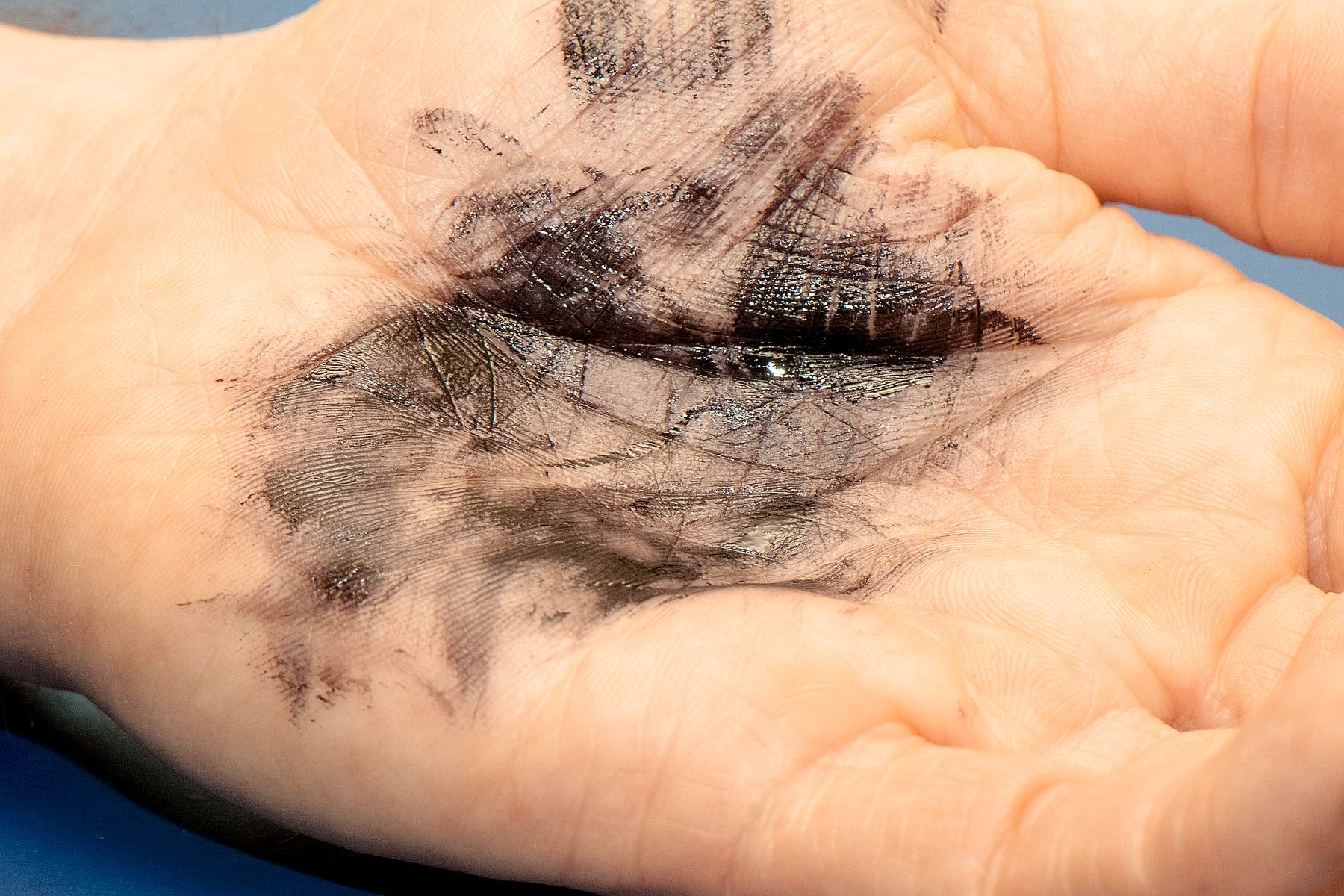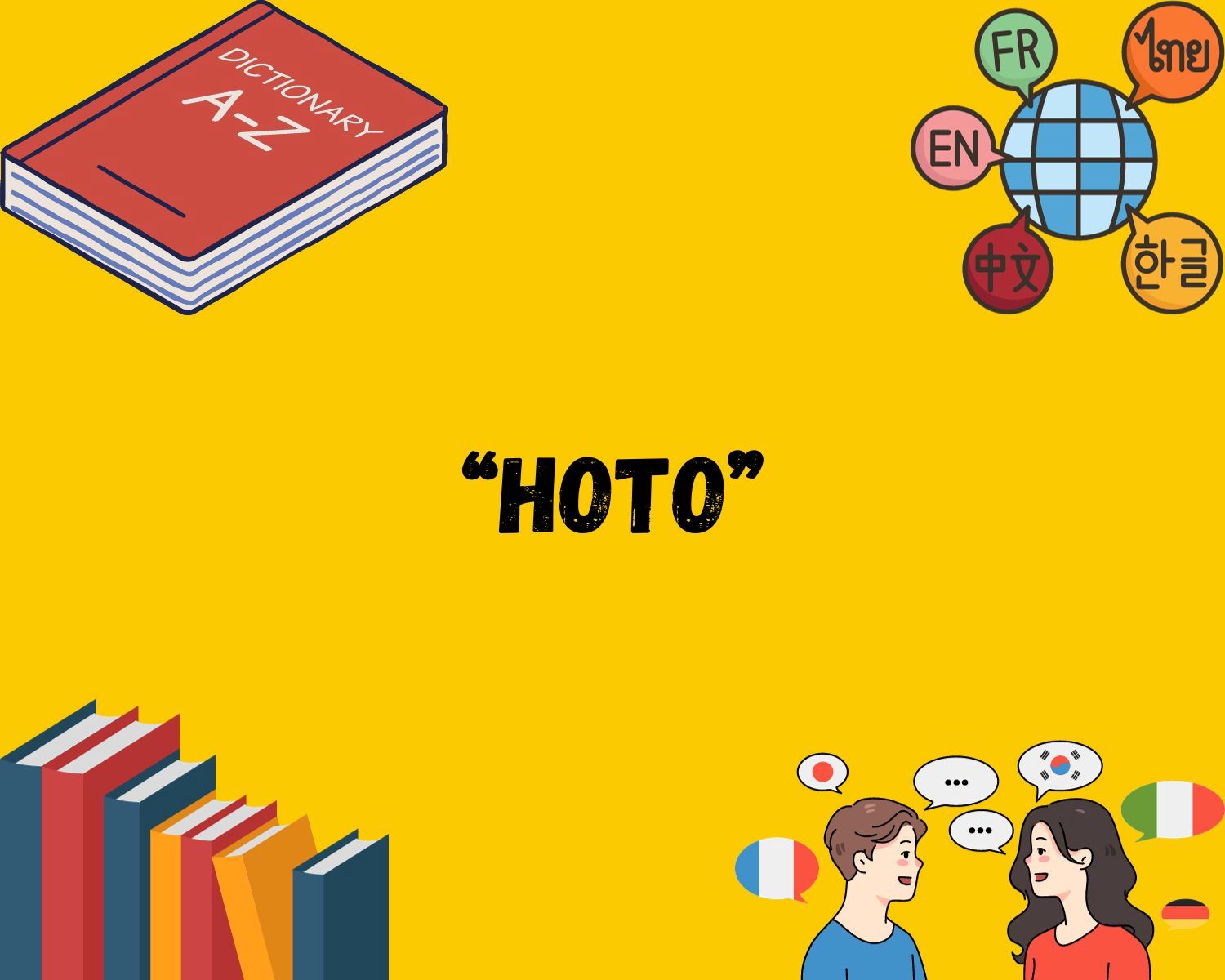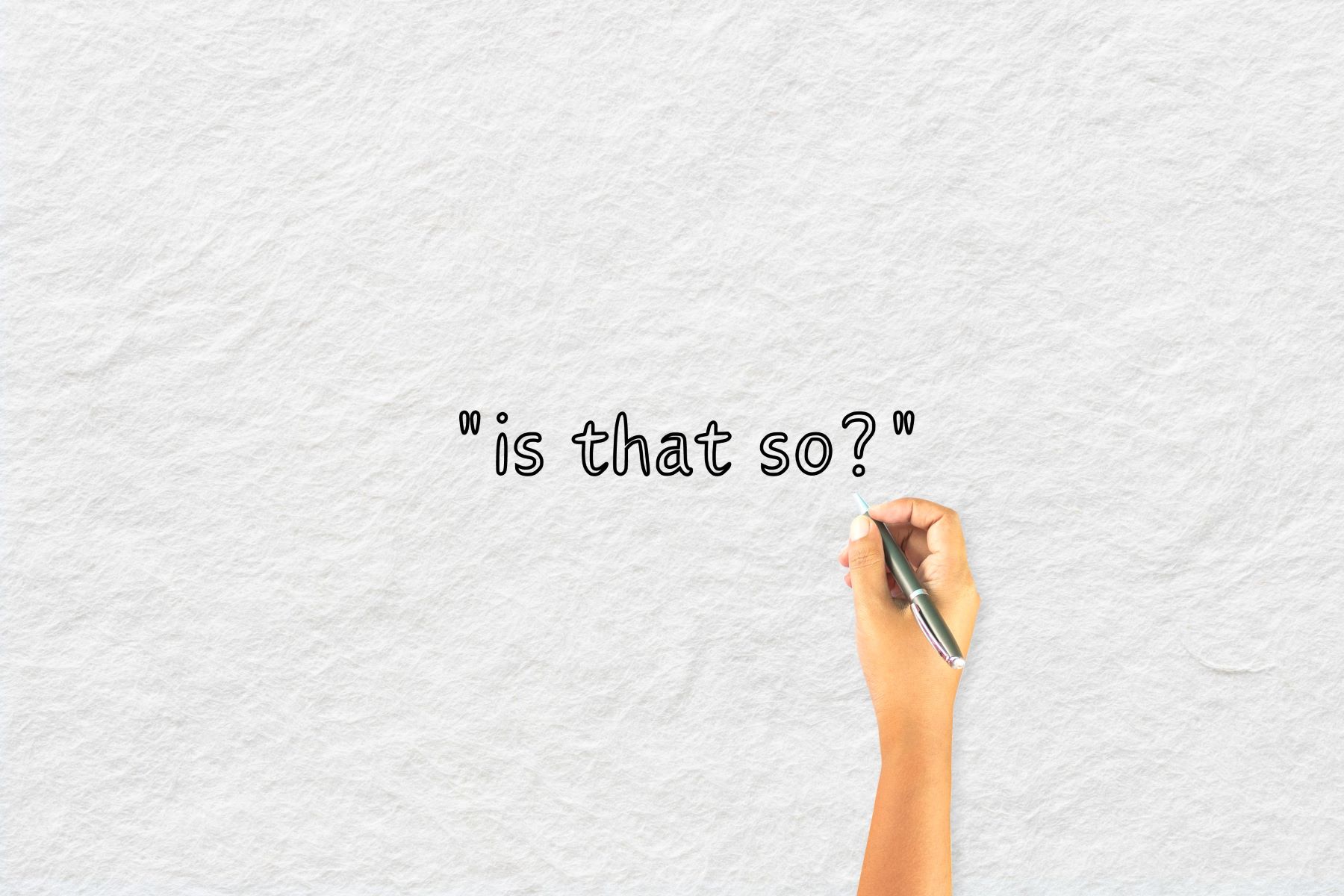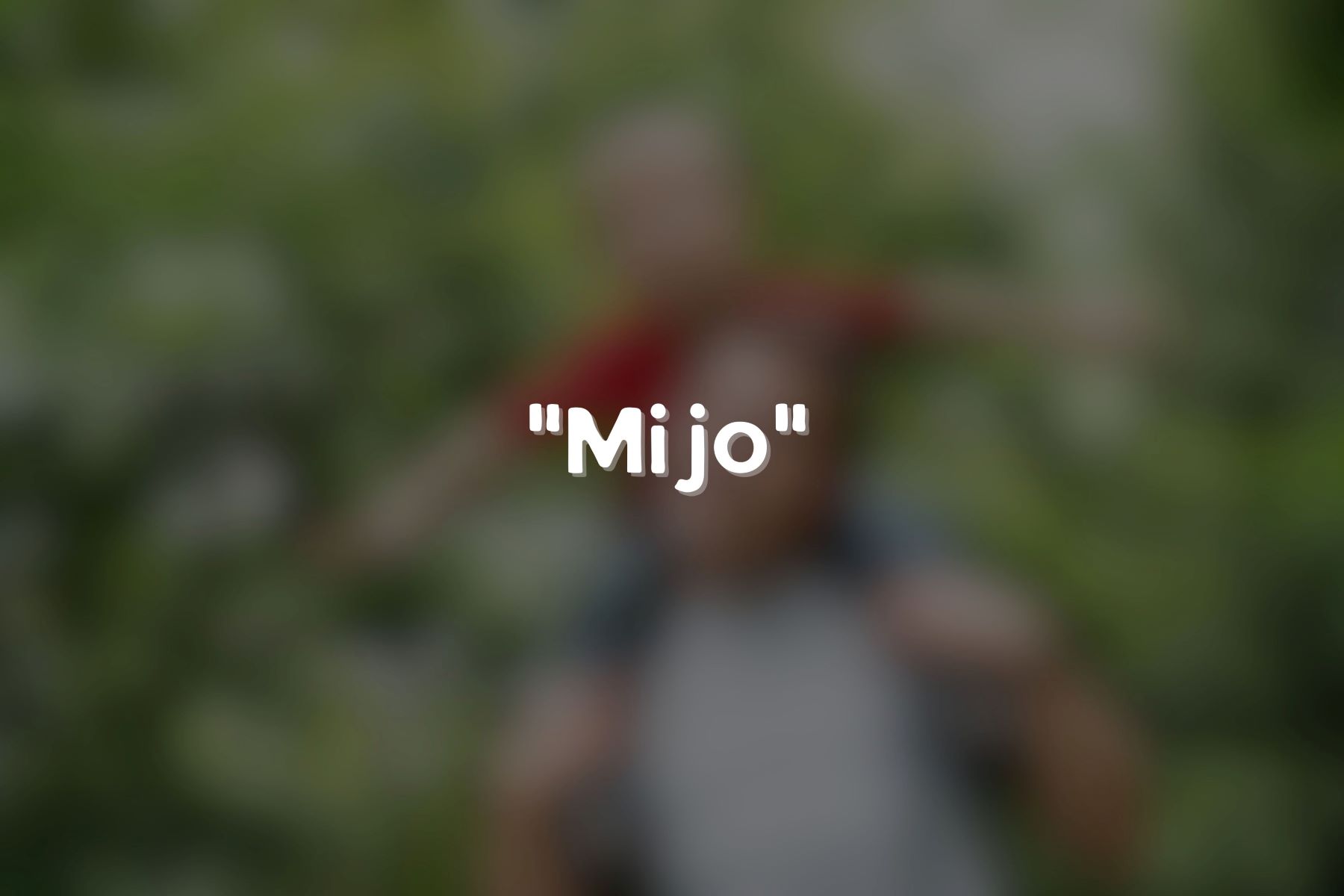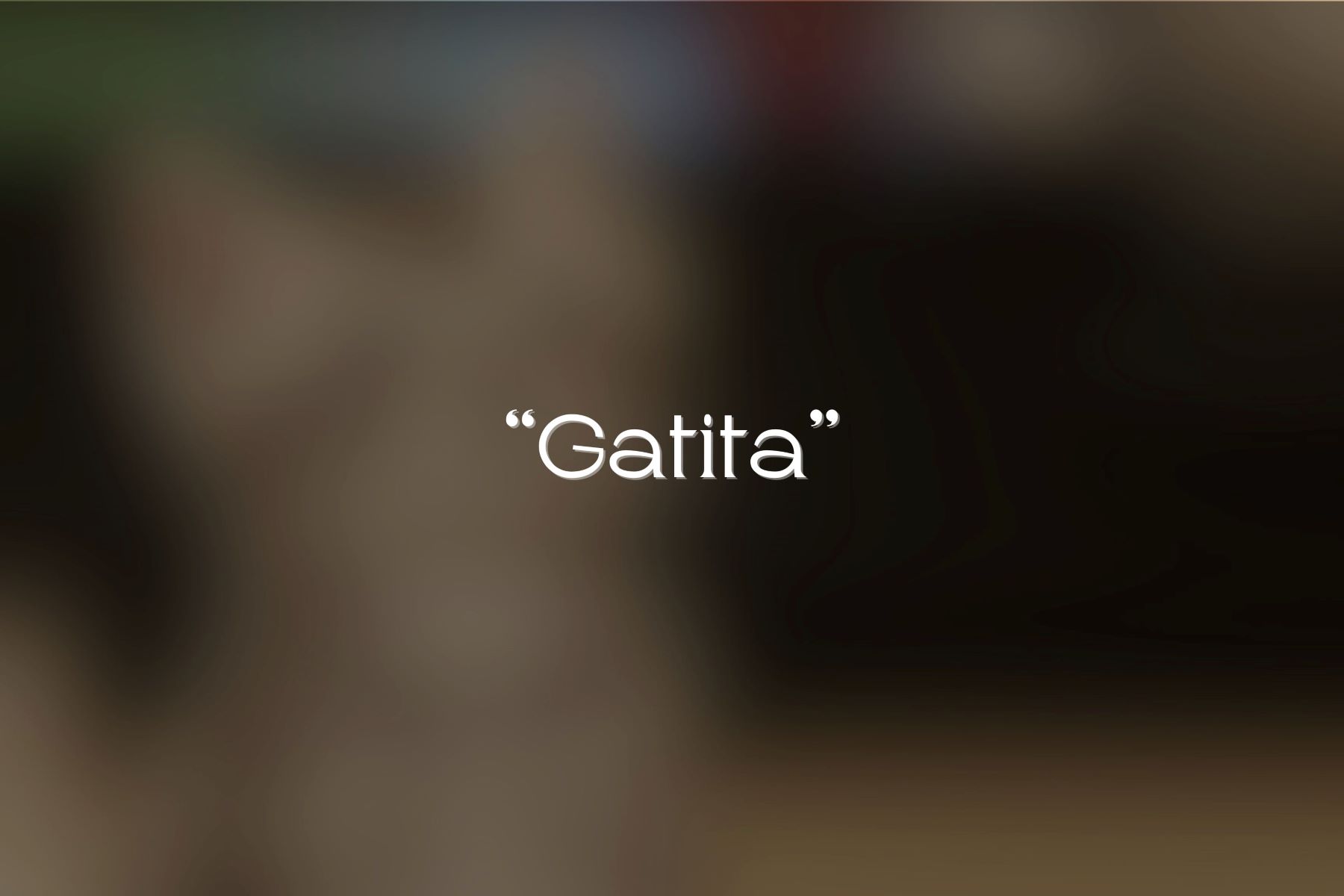Home>Arts and Culture>10 Hand Gestures With Surprising Meanings!
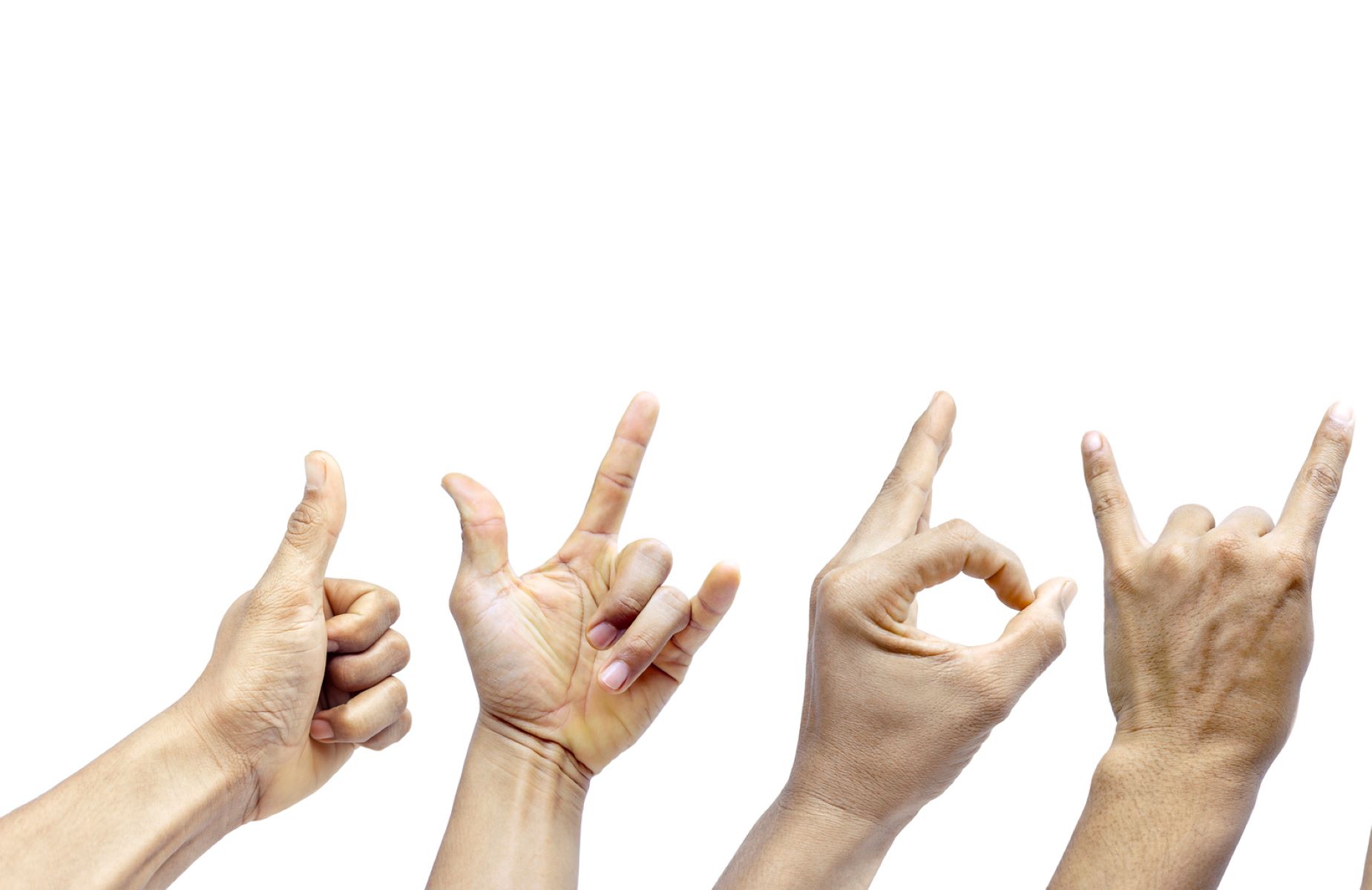

Arts and Culture
10 Hand Gestures With Surprising Meanings!
Published: January 29, 2024
Discover the intriguing meanings behind 10 hand gestures in arts and culture. Uncover the hidden symbolism and cultural significance.
(Many of the links in this article redirect to a specific reviewed product. Your purchase of these products through affiliate links helps to generate commission for Regretless.com, at no extra cost. Learn more)
Table of Contents
Introduction
Hand gestures are a universal form of nonverbal communication, often used to convey emotions, express thoughts, or emphasize messages. They have the power to transcend language barriers and convey complex meanings with a simple movement of the fingers and palms. From casual interactions to formal settings, hand gestures play a significant role in human interaction and cultural expression.
In this article, we will delve into the intriguing world of hand gestures, exploring their surprising meanings and cultural significance. Each gesture carries a unique history and conveys a distinct message, making them a fascinating subject of study across different cultures and societies. Whether it's the ubiquitous thumbs-up or the enigmatic crossed fingers, these gestures have woven themselves into the fabric of human communication, adding depth and nuance to our interactions.
As we embark on this exploration, we will uncover the hidden meanings behind ten hand gestures, shedding light on their origins, interpretations, and the diverse ways in which they are perceived around the world. From gestures of affirmation to those steeped in superstition, each hand movement holds a story waiting to be unraveled.
Without further ado, let's unravel the intricate web of hand gestures, peeling back the layers of meaning and cultural significance to gain a deeper understanding of these silent yet powerful forms of expression. Join us on this journey as we uncover the surprising meanings behind some of the most commonly used hand gestures, inviting you to see them in a new light and appreciate the richness they bring to human communication.
The OK Sign
The "OK" sign, characterized by forming a circle with the thumb and index finger while extending the other three fingers, is a widely recognized gesture in many parts of the world. Its meaning, however, goes beyond a simple indication of approval or agreement. Originating in the United States in the 19th century, the OK sign has evolved to convey diverse messages across different cultures and contexts.
In the realm of popular culture, the OK sign has been associated with positivity and affirmation. It is often used to express agreement, satisfaction, or to signal that everything is going well. This interpretation has contributed to the widespread use of the gesture in everyday conversations, where it serves as a nonverbal way to convey consent or endorsement. Additionally, the OK sign has become a symbol of reassurance and encouragement, offering a subtle yet impactful way to communicate support or approval.
However, the meaning of the OK sign is not limited to its positive connotations. In certain cultural contexts, the gesture carries a different significance that can vary widely. For example, in some parts of the world, such as France and Belgium, forming the OK sign with the hand can be interpreted as a vulgar or offensive gesture. This demonstrates the importance of understanding the cultural nuances associated with hand gestures, as their meanings can differ significantly from one place to another.
Moreover, the OK sign has also been used as a symbol of unity and inclusivity. In American Sign Language (ASL), the gesture represents the letter "F" when the thumb is placed over the index finger, and the letter "U" when the thumb is placed over the middle finger. This duality has been embraced by various communities as a symbol of solidarity and support, particularly in social and political movements advocating for equality and diversity.
The versatility of the OK sign highlights its ability to convey a spectrum of meanings, ranging from affirmation and unity to cultural nuances and even controversy. Its evolution from a simple hand gesture to a multifaceted symbol underscores the intricate nature of nonverbal communication and the significance of understanding the diverse interpretations associated with gestures in different cultural contexts. As such, the OK sign serves as a compelling example of how a seemingly straightforward gesture can carry layers of meaning, reflecting the complexities of human interaction and expression.
The Thumbs-Up
The thumbs-up gesture, characterized by raising the thumb upward while keeping the other fingers curled into the palm, is a widely recognized and versatile hand signal with a rich cultural history. Its origins can be traced back to ancient Rome, where it was used as a symbol of approval and affirmation in gladiatorial contests. The gesture, known as "pollice verso" in Latin, signified the audience's decision on whether a defeated gladiator should be spared or condemned to death.
Over time, the thumbs-up gesture has transcended its historical roots and gained global prominence as a symbol of positivity, encouragement, and agreement. Its widespread usage in contemporary society has cemented its status as a ubiquitous form of nonverbal communication, often employed to express approval, support, or to convey a sense of optimism.
In many cultures, the thumbs-up is synonymous with approval and is commonly used in everyday interactions to indicate satisfaction or agreement. Whether it's a simple way to acknowledge a job well done or a gesture of reassurance in challenging situations, the thumbs-up serves as a universal symbol of affirmation, transcending linguistic barriers to convey a positive message.
Furthermore, the thumbs-up gesture has become deeply ingrained in popular culture, often depicted in media, advertising, and social media platforms as a visual shorthand for endorsement and positivity. Its pervasive presence in modern communication reflects its enduring appeal as a simple yet powerful means of expressing encouragement and support.
However, it's important to note that the meaning of the thumbs-up gesture can vary across different cultural contexts. While it is widely interpreted as a positive signal in many parts of the world, there are regions where the gesture holds different connotations. For instance, in some Middle Eastern countries, the thumbs-up is considered offensive and can be perceived as a rude or derogatory gesture. This underscores the significance of cultural awareness when interpreting hand gestures, as their meanings can differ significantly based on geographical and societal norms.
The thumbs-up's ability to convey a range of positive sentiments, from approval and optimism to solidarity and encouragement, underscores its enduring relevance in human communication. Its evolution from a historical symbol of life or death to a contemporary emblem of affirmation and support exemplifies the enduring power of hand gestures to transcend time and cultural boundaries, enriching our interactions with depth and nuance.
The Peace Sign
The peace sign, characterized by forming a "V" shape with the index and middle fingers while keeping the other fingers extended, is a globally recognized symbol of peace, unity, and hope. Its origins can be traced back to the mid-20th century, where it emerged as an emblem of protest and solidarity during the tumultuous era of social and political change.
The peace sign's iconic status is closely linked to its association with the peace movement and activism, particularly during the 1960s. It became synonymous with the call for nonviolence, harmony, and social justice, serving as a visual representation of the collective desire for a more peaceful world. Its adoption by various countercultural movements and advocates for civil rights further solidified its significance as a symbol of hope and resistance against oppression and conflict.
Beyond its role in activism, the peace sign has transcended its origins to become a universal symbol of peace and goodwill. Its enduring appeal lies in its ability to convey a message of unity and compassion without the need for words, making it a powerful tool for fostering understanding and empathy across diverse cultures and languages.
In contemporary society, the peace sign continues to be embraced as a positive and inclusive symbol, often used to express a commitment to peaceful coexistence and global solidarity. Its presence in art, music, and popular culture reflects its enduring relevance as a visual representation of the universal aspiration for a more harmonious and equitable world.
Moreover, the peace sign's impact extends beyond its visual representation, influencing the language of gestures and nonverbal communication. It serves as a tangible reminder of the shared human desire for peace, resonating with people from all walks of life and transcending geographical and ideological boundaries.
The peace sign's evolution from a symbol of protest and activism to a timeless emblem of peace and unity underscores its enduring relevance and universal appeal. Its ability to convey a profound message of hope and solidarity through a simple hand gesture exemplifies the power of nonverbal communication to inspire positive change and foster a sense of interconnectedness among individuals and communities worldwide.
The Finger Point
The finger point, a seemingly straightforward gesture involving the extension of the index finger to indicate direction or draw attention, carries a rich tapestry of meanings and cultural significance. Its origins can be traced back to ancient civilizations, where it served as a practical means of communication and coordination within communities. Over time, the finger point has evolved to encompass a spectrum of interpretations, reflecting its diverse roles in human interaction and expression.
At its core, the finger point is often used to indicate a specific object, person, or location, serving as a visual cue to direct attention or convey information. Whether it's guiding someone towards a particular destination or highlighting a noteworthy item, the gesture facilitates clear and concise communication without the need for verbal explanation. In this context, the finger point serves as a practical tool for signaling and navigation, allowing individuals to convey spatial relationships and draw focus to relevant elements in their surroundings.
Beyond its practical utility, the finger point also carries symbolic and cultural meanings that vary across different societies. In some cultures, the gesture is imbued with nuances of authority and assertion, representing a direct and assertive way to communicate intentions or express disapproval. Conversely, in certain social settings, the finger point can be perceived as impolite or confrontational, highlighting the importance of understanding the cultural context in which the gesture is employed.
In the realm of nonverbal communication, the finger point plays a pivotal role in emphasizing statements, expressing urgency, or signaling agreement. Its versatility allows it to convey a sense of urgency or importance, drawing immediate attention to the subject at hand. Moreover, the finger point can serve as a nonverbal affirmation, reinforcing verbal communication and adding emphasis to spoken words.
However, it's essential to note that the interpretation of the finger point can be influenced by cultural norms and individual perceptions. In some cultures, pointing directly at another person may be considered rude or disrespectful, while in others, it may be a common and accepted form of communication. This underscores the significance of cultural awareness and sensitivity when using hand gestures, as their meanings can vary widely based on societal conventions and personal interpretations.
In essence, the finger point encapsulates a myriad of meanings, from practical communication to cultural symbolism and nonverbal emphasis. Its evolution from a utilitarian means of indicating direction to a complex form of nonverbal expression reflects the intricate nature of human communication and the diverse ways in which gestures convey information and intention. As such, the finger point serves as a compelling example of the multifaceted role of hand gestures in shaping interpersonal dynamics and cultural interactions.
The Finger Wag
The finger wag, characterized by the repetitive side-to-side movement of the index finger, holds a fascinating array of meanings and cultural significance. Often associated with admonition, disapproval, or warning, this distinctive gesture transcends linguistic barriers to convey a powerful message through nonverbal communication.
The origins of the finger wag can be traced back to ancient customs and traditions, where it served as a visual cue to signal dissent or caution. Over time, the gesture evolved to become a universal symbol of admonishment, reflecting its enduring role in interpersonal dynamics and social interactions. Its ability to convey a sense of rebuke or warning without the need for spoken words underscores its effectiveness as a nonverbal tool for expressing disapproval or caution.
In many cultures, the finger wag is employed as a means of asserting authority or asserting boundaries, serving as a visual reminder of social norms and expectations. It can be used to communicate a range of sentiments, from mild reprimand to stern warning, depending on the context and intensity of the gesture. Its ability to convey a nuanced message of disapproval or caution makes it a potent form of nonverbal communication, capable of influencing behavior and signaling social cues.
Moreover, the finger wag's impact extends beyond its immediate visual representation, influencing the language of nonverbal communication and interpersonal dynamics. Its repetitive motion and assertive nature serve as a clear and direct means of conveying admonition or caution, making it a potent tool for expressing boundaries and expectations in social interactions.
However, it's essential to recognize that the interpretation of the finger wag can vary across different cultural contexts. While it may be widely recognized as a symbol of disapproval or warning in many societies, there are nuances in its meaning and reception based on regional customs and individual perceptions. This underscores the importance of cultural awareness and sensitivity when using hand gestures, as their meanings can differ significantly based on societal conventions and personal interpretations.
In essence, the finger wag encapsulates a spectrum of meanings, from admonition and caution to assertion and boundary-setting. Its evolution from a traditional symbol of dissent to a contemporary form of nonverbal expression reflects the intricate nature of human communication and the diverse ways in which gestures convey information and intention. As such, the finger wag serves as a compelling example of the multifaceted role of hand gestures in shaping interpersonal dynamics and cultural interactions.
The Fist Bump
The fist bump, a gesture that involves lightly tapping closed fists together, has emerged as a contemporary and versatile form of nonverbal communication with a rich array of meanings and cultural significance. Originating as a casual and informal greeting among athletes and peers, the fist bump has transcended its initial context to become a widely recognized symbol of camaraderie, solidarity, and mutual respect in diverse social and professional settings.
In contemporary society, the fist bump has gained widespread acceptance as a modern alternative to traditional handshakes, particularly in informal or casual interactions. Its appeal lies in its simplicity and versatility, offering a hygienic and efficient means of acknowledging others without the need for physical contact. This has become particularly relevant in the context of health and hygiene awareness, where the fist bump serves as a practical and considerate gesture that minimizes the spread of germs while maintaining a sense of connection and acknowledgment.
Furthermore, the fist bump's role extends beyond its practical advantages, as it embodies a spirit of camaraderie and egalitarianism. By eschewing formalities and embracing a more relaxed form of greeting, the fist bump fosters a sense of equality and familiarity among individuals, transcending hierarchical or social barriers. This has contributed to its widespread adoption in various professional domains, where it serves as a symbol of mutual respect and collaboration, irrespective of status or seniority.
Moreover, the fist bump has become a visual representation of shared experiences and mutual understanding. Its use in celebratory contexts, such as sporting events or team achievements, underscores its role as a gesture of solidarity and shared accomplishment. The act of tapping fists conveys a sense of unity and support, symbolizing a collective effort and shared triumphs, thereby reinforcing interpersonal bonds and fostering a sense of belonging within groups and communities.
However, it's important to recognize that the interpretation of the fist bump can vary based on cultural norms and individual preferences. While it is widely embraced in many societies as a friendly and inclusive gesture, there may be nuances in its reception and meaning based on regional customs and personal perceptions. This highlights the significance of cultural awareness and sensitivity when employing hand gestures, as their connotations can differ significantly depending on societal conventions and individual interpretations.
In essence, the fist bump encapsulates a spectrum of meanings, from camaraderie and mutual respect to practicality and inclusivity. Its evolution from a casual greeting to a contemporary symbol of solidarity and shared experiences reflects the dynamic nature of human communication and the diverse ways in which gestures convey connections and understanding. As such, the fist bump serves as a compelling example of the multifaceted role of hand gestures in shaping interpersonal dynamics and cultural interactions.
The Handshake
The handshake, a time-honored and universally recognized gesture of greeting and agreement, holds a revered position in the realm of interpersonal communication. Rooted in traditions that span centuries and continents, the handshake serves as a tangible expression of respect, trust, and mutual understanding. Its significance transcends cultural boundaries, symbolizing the fundamental human need for connection and cooperation.
At its core, the handshake embodies a spirit of equality and goodwill, as it brings individuals together on a level playing field, irrespective of their backgrounds or affiliations. By extending a hand and clasping another's in a firm yet gentle manner, individuals convey a message of openness and receptiveness, laying the foundation for meaningful interactions and collaborations. This act of physical contact fosters a sense of immediate connection and rapport, setting the stage for productive dialogue and shared endeavors.
Moreover, the handshake serves as a nonverbal contract, signifying the agreement or commitment between individuals. Whether it's sealing a business deal, affirming a promise, or expressing gratitude, the act of shaking hands carries a weight of sincerity and integrity. It embodies the unspoken pledge to honor one's word and uphold the principles of honesty and trust, making it a cornerstone of professional and personal relationships alike.
In addition to its role in formal settings, the handshake also plays a pivotal role in social interactions, serving as a gesture of warmth and congeniality. It acts as a bridge that transcends linguistic and cultural barriers, allowing individuals to convey respect and courtesy in a universally understood manner. Whether it's a welcoming embrace or a gesture of solidarity, the handshake embodies the shared values of civility and human connection, enriching interpersonal encounters with a sense of dignity and grace.
However, the global prevalence of the handshake does not negate the importance of cultural awareness and sensitivity. While it is widely accepted in many societies as a symbol of respect and agreement, there are variations in its execution and interpretation based on regional customs and traditions. Understanding the nuances of handshake etiquette in different cultures is essential for fostering cross-cultural understanding and avoiding inadvertent misunderstandings.
In essence, the handshake encapsulates a depth of meanings, from trust and agreement to warmth and respect. Its evolution from a traditional form of greeting to a symbol of integrity and unity reflects the enduring power of nonverbal communication to forge connections and bridge divides. As such, the handshake stands as a testament to the timeless significance of human touch in fostering understanding and cooperation, transcending words to convey the essence of shared humanity.
The Crossed Fingers
The crossed fingers gesture, characterized by intertwining the index and middle fingers while keeping the others folded, holds a fascinating array of meanings and cultural significance. This distinctive hand gesture has transcended its origins to become a widely recognized symbol of hope, luck, and anticipation, weaving itself into the fabric of human communication and expression.
The origins of the crossed fingers can be traced back to ancient customs and superstitions, where it served as a tangible expression of faith and optimism. Across various cultures, the gesture has been associated with invoking good fortune, warding off misfortune, or expressing a silent plea for success. Its enduring appeal lies in its ability to convey a sense of anticipation and aspiration without the need for spoken words, making it a powerful tool for expressing optimism and resilience in the face of uncertainty.
In contemporary society, the crossed fingers gesture continues to be embraced as a universal symbol of hope and encouragement. Whether it's used to convey a wish for good luck before an important event or to express solidarity and support for others facing challenges, the gesture serves as a tangible reminder of the human capacity for optimism and belief in better outcomes. Its pervasive presence in everyday interactions reflects its enduring relevance as a visual representation of the collective desire for positive outcomes and fortuitous circumstances.
Moreover, the crossed fingers gesture transcends cultural and linguistic barriers, resonating with people from diverse backgrounds and beliefs. Its universal appeal as a symbol of hope and anticipation underscores its role as a unifying force in human communication, fostering a sense of shared aspirations and common humanity. This has made the crossed fingers a potent form of nonverbal expression, capable of conveying a message of encouragement and solidarity across geographical and cultural divides.
However, it's important to recognize that the interpretation of the crossed fingers can vary based on individual beliefs and cultural customs. While it is widely recognized as a symbol of hope and optimism in many societies, there may be nuances in its reception and meaning based on personal associations and regional traditions. This highlights the significance of understanding the diverse cultural contexts in which hand gestures are employed, as their connotations can differ significantly depending on individual interpretations and societal conventions.
In essence, the crossed fingers encapsulate a spectrum of meanings, from hope and optimism to solidarity and encouragement. Its evolution from a traditional symbol of faith to a contemporary form of nonverbal expression reflects the enduring power of hand gestures to convey resilience and belief in positive outcomes. As such, the crossed fingers stand as a compelling example of the multifaceted role of nonverbal communication in shaping human interactions and fostering a sense of shared hope and aspiration.
Read more: Top 10 Japanese Names That Mean Moon!
The A-OK Hand Gesture
The A-OK hand gesture, characterized by forming a circle with the thumb and index finger while extending the other three fingers, is a widely recognized and versatile hand signal with a rich cultural history. Its origins can be traced back to the early 19th century, where it emerged as a symbol of affirmation and approval. The gesture's enduring appeal lies in its ability to convey a message of reassurance and positivity, making it a ubiquitous form of nonverbal communication in diverse social and professional contexts.
At its core, the A-OK hand gesture embodies a spirit of encouragement and agreement. Whether it's used to indicate satisfaction with a task, express endorsement, or convey a sense of well-being, the gesture serves as a visual affirmation of positivity and assurance. Its simplicity and universality have contributed to its widespread adoption as a means of conveying consent or support, transcending linguistic barriers to communicate a message of affirmation and unity.
Moreover, the A-OK hand gesture has become deeply ingrained in popular culture, often depicted in media, advertising, and social media platforms as a visual shorthand for endorsement and optimism. Its pervasive presence in contemporary communication reflects its enduring relevance as a symbol of positivity and encouragement, resonating with people from diverse backgrounds and beliefs. This has made the A-OK hand gesture a potent form of nonverbal expression, capable of fostering a sense of solidarity and shared optimism in a variety of interpersonal interactions.
However, it's important to recognize that the interpretation of the A-OK hand gesture can vary based on cultural norms and individual perceptions. While it is widely accepted in many societies as a symbol of affirmation and positivity, there may be nuances in its reception and meaning based on regional customs and personal associations. This underscores the significance of understanding the diverse cultural contexts in which hand gestures are employed, as their connotations can differ significantly depending on individual interpretations and societal conventions.
In essence, the A-OK hand gesture encapsulates a spectrum of meanings, from affirmation and positivity to solidarity and encouragement. Its evolution from a traditional symbol of approval to a contemporary form of nonverbal expression reflects the enduring power of hand gestures to convey reassurance and unity. As such, the A-OK hand gesture stands as a compelling example of the multifaceted role of nonverbal communication in shaping human interactions and fostering a sense of shared positivity and agreement.





